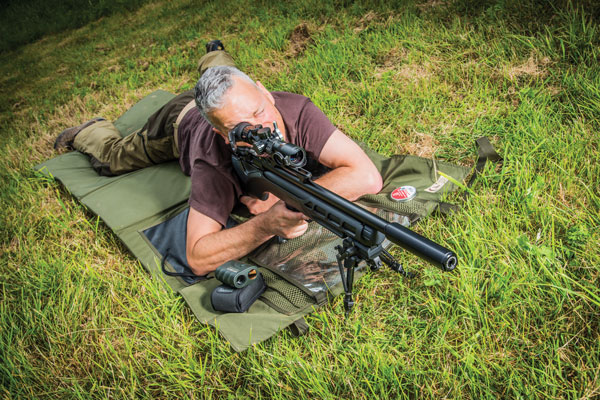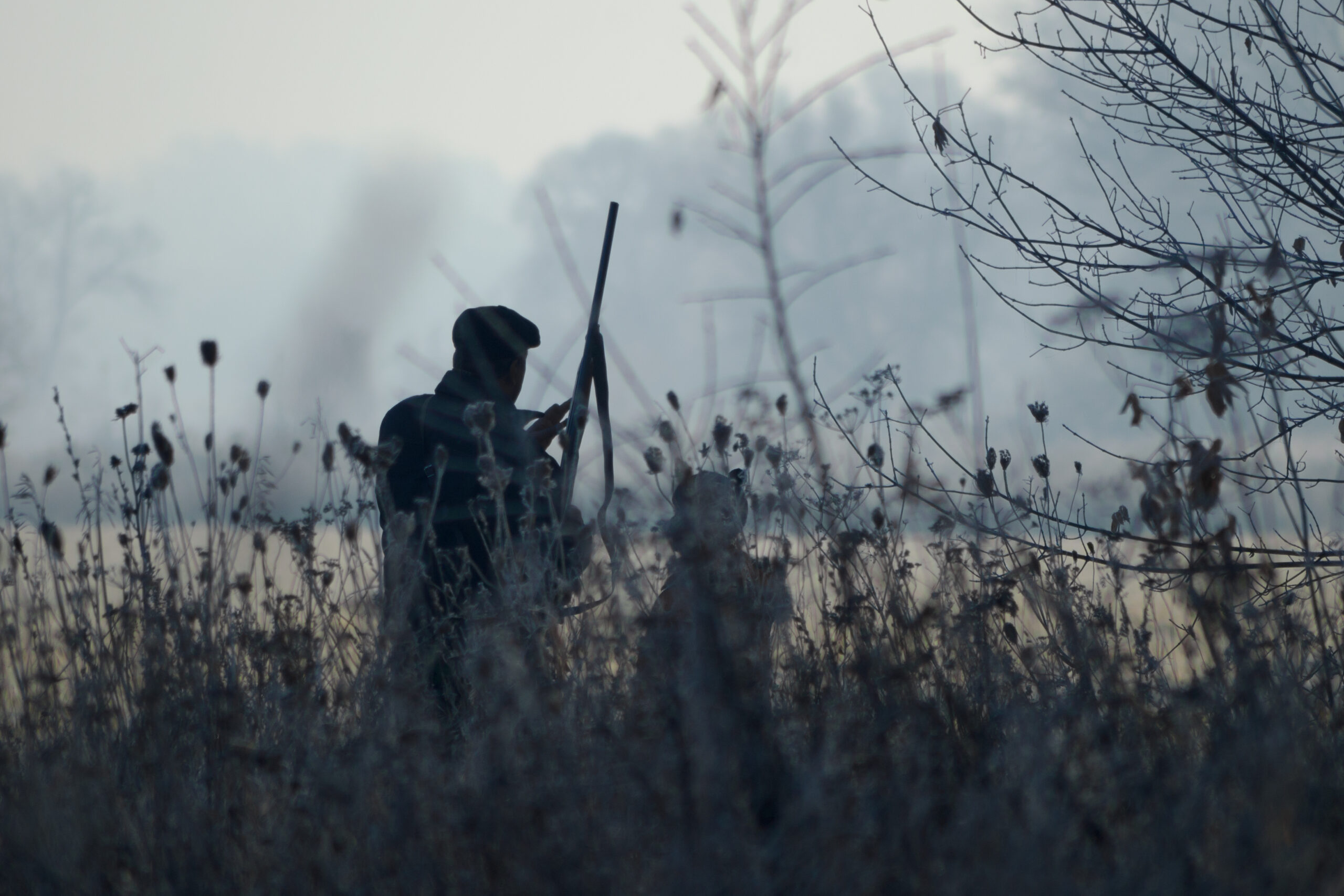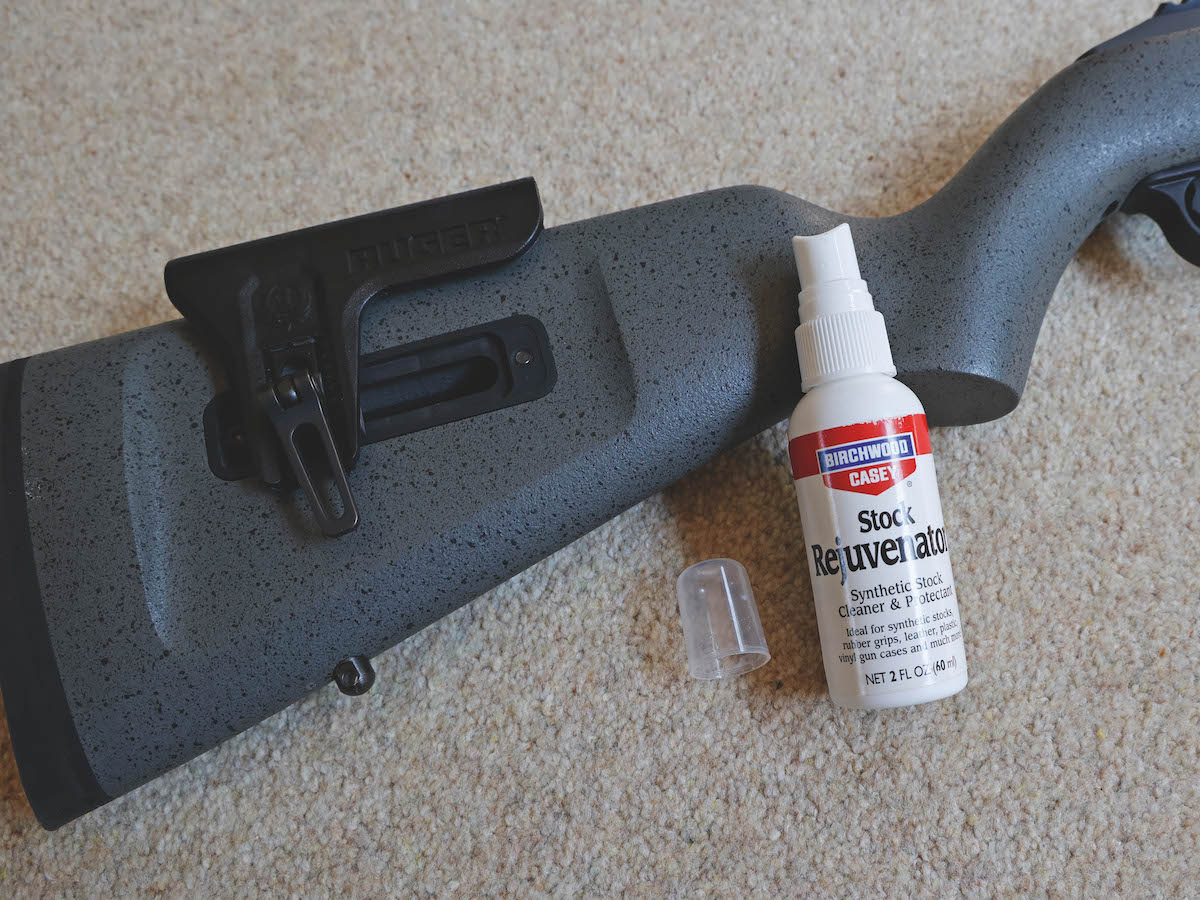Zeroing a scope – Mike Morton’s advice for airgun shooters
Zeroing a scope is a vital step on the road to accurate shooting – but, as Mike Morton explains, so is knowing where to aim at a host of different distances

It’s the sighting system that you must adjust to ensure that the point of aim and the point of impact coincide at your chosen distance
You’ve got yourself a new rifle, you’ve attached a scope and you’re ready to shoot – but first you need to zero. Zeroing a scope, which is sometimes referred to as sighting in, means aligning the sights on your rifle with the point where the pellet strikes at a certain distance.
Unless you have the ability to adjust the power on your gun – and that’s something we won’t go into here – a rifle cannot be manipulated to alter the path of the pellet: it’s the sighting system that you must adjust to ensure that the point of aim and the point of impact coincide at your chosen distance, which is why zeroing a scope is so important.
While we’ll be focusing here on a rifle fitted with a telescopic sight, rifles with open sights need to be zeroed too, and the principles we’ll be discussing are broadly the same.

A BoreSnake needs to be fed into the barrel through the breech. Because of its long brass guide, it can only be used on a break-barrel air rifle
But for now, let’s assume you have a new rifle and scope combo. You’ve fitted the scope correctly, achieving perfect head position and eye relief. While it looks like you’re ready to rock, there are a few things you still need to consider before you get going in zeroing a rifle…
Whether your rifle is brand new or second-hand, it’s always a good idea to clean the barrel. VFG felt cleaning pellets are suitable for light cleaning and maintenance, but you’ll need something more robust to carry out a deep clean on a new or unknown barrel.
Who knows how much manufacturing grease has been packed into the lands and grooves? If it’s a second-hand gun, do you know how many pellets have been through that barrel since it was last cleaned? A pull-through is great for any type of air rifle, while a BoreSnake is even better if you’re zeroing a break-barrel.
Initial pellet selection

In long-range centrefire shooting, turrets with MOA adjustment are arguably more useful, but for the airgun shooter there’s little to choose between the available options
Now that you have a clean barrel, you have to make a choice: which pellet is likely to work best in your barrel? Of course the only way to determine this is to shoot groups and pick the pellet that delivers the smallest group size; but that can’t be done until the rifle has been zeroed.
JSB Exact, Air Arms Diabolo Field and H&N Field Target Trophy are all good pellets to use as a baseline. Having settled on one, fire 20 shots into a safe backstop. This will lead the barrel: a barrel does need some lead in the rifling to achieve optimum accuracy. (Looking for the best airgun pellets? Read our list here).
Zeroing a scope: Short first, longer later

Each click of the turret on this MTC Viper Connect will shift the point of impact by 1/4 inch at 100 yards
Now, let’s get shooting! While it’s tempting to set up your target at your chosen zeroing distance, you are far better off setting up an initial zero at close range, where your pellets are more likely to strike your chosen target and you can adjust accordingly. My chosen range for setting this initial zero is 10 yards – ensuring, as always, that there’s a safe backstop behind the target.
Take your first shot. If you see the strike, great. If you don’t, shoot again. If you still can’t see where the pellets are hitting, pull the target in a little closer until you can.
You now need to set a rough zero at the 10-yard mark – or your shorter distance if you had to pull in your target. Most scopes will have windage and elevation adjustments in one-quarter increments. This means one click of the turret will move the point of impact a quarter of an inch at 100 yards.
If your shot was 1in low at 100 yards, you would therefore need to bring the point of impact up by 1in – meaning four clicks at 100 yards. But as we have been setting our initial zero at just 10 yards, that would mean raising the point of impact by 40 clicks!
Which adjustment to make?

In contrast, every click on this Hawke Sidewinder will shift POI by 1/4 minute of angle at 100 yards
Some scope turrets will measure adjustment in minutes of angle (MOA), which is very slightly different to the standard 1/4in at 100-yard increments we’ve been talking about.
One MOA at 100 yards equals 1.047 inches, so for a rifle scope with 1⁄4 MOA adjustments, each click equals 0.261in at 100 yards – near enough the same for our purposes. Other turrets offer an adjustment in milliradians – more on that unit of measurement later.
If you can’t really be bothered with the maths, and seeing how pellets are relatively cheap, you could just simply adjust your scope turrets on the fly – guesstimating the adjustment needed, shooting, and readjusting until you have your 10-yard zero. In some ways this is easier, but it takes longer and means you’ll shoot more pellets than necessary.

Protect your ears: Treat felt pellets with respect, just like any other type of ammo. They are extremely loud, so wear hearing protection when using them, but they’re ideal for barrel maintenance
Once you have your sights set at your initial zero, it’s time to make a decision: at what distance should you set your primary zero? This will depend on the type of shooting you do.
If you intend to shoot Light Sporting Rifle at your indoor target club, your zero should be 20 or 25 yards. If almost all your hunting will involve shooting rabbits from a particular point on a pony paddock 40 yards away, it makes sense to have a 40-yard zero.
For most shooters, however, 30 yards offers a happy medium. Feel free to use the metric system if you feel more comfortable with that, but remember that many target sports use the Imperial system to set out distances to the target.
Zeroing a scope: Take five

This rifle has been almost perfectly zeroed. One click up and one to the left should do the job nicely
With your target now set back at your chosen zero distance – 30 yards in this case – shoot a group of five pellets, take the average point of impact and adjust your zero accordingly.
Keep doing this until the average point of impact of the group is in or around the bull. Again, it’s tempting to adjust for every single shot, but a five-shot group will give a more meaningful average with an untested pellet.
Congratulations! You’ve now set zero at your chosen zeroing distance – but only with one type of pellet. What you really want to do next is to see how the rifle shoots at different distances. This will vary from pellet to pellet, and there’s no point in doing this until you’ve found the perfect ammo for your rifle.
You may have struck gold first time out, and your rifle is now printing consistent one-hole groups in the bull at your chosen zero range. If not, it’s time to test some different types of pellet, preferably on an indoor range or outdoors in no-wind conditions.

Which pellet will work in your barrel? Only you can find out, and that means testing different types of pellets from different brands and comparing the results – it all takes time
Pellets are not made of pure lead, and different pellets are made of different lead alloys. This means a barrel already leaded for Pellet X may not deliver the best results for Pellet Y.
To give each of your test pellets their best chance to perform, you’ll need to clean the barrel every time you change brands by shooting a few felt pellets, then re-leading the barrel by taking 20 or so shots with the new pellet before carrying out your next round of testing.
If you’re zeroing a springer, you’ll need to load a lead pellet directly behind the felt one to provide a cushion of air and prevent the piston from slamming into the cylinder, damaging the rifle.
What are you looking for? HFT target kill zones vary from 15 and 45mm, with the smaller kill zones set out between 13 and 25 yards. In the hunting field, a kill zone the size of a 10p piece – 24.5mm, or just under an inch – is reckoned to be a good yardstick.
For my own shooting, I like to see a five-shot group fit underneath an 18mm-wide 5p piece at my 30-yard zero, with sub-10 pence piece groups at all other distances. Again, this will vary depending on your type of shooting. Once you’ve found a pellet that performs well at your chosen zero distance, stick to it!
Now you’ve found the perfect pellet for your barrel, you have to decide what distances you’ll be shooting over, and which size groups – and therefore accuracy – are acceptable to you at these ranges. HFT targets are set out from eight to 45 yards, so let’s use these as an example.

A large target put up at close range is perfect for spotting your hits and enabling you to set a rough initial zero
For most people, the term point-blank range (PBR) means ‘close’; but for shooters, PBR is the range over which you can aim dead-on and still hit a target of your chosen size without having to adjust. To work out PBR, move the target in five-yard increments and shoot five-shot groups.
In my case I was using a 1in Birchwood Casey Target Spot target, which is slightly larger than a 10p piece. Between 20 yards and 35 yards, I was still hitting my kill zone while aiming at the bull. This means my rifle, scope and pellet combo has a PBR of 20-35 yards, and that means pretty much anything I shoot at will be hit – providing my marksmanship is up to scratch – just by aiming on.
Things get more complicated outside your PBR. Depending on the range you are zeroed at and the distance between the centreline of your scope and the bore of the barrel, you will have to aim either higher or lower to place your shots inside the kill zone.
The best way to find out where to aim is to shoot the rifle at these distances – in my case, out to 40 then 45 yards, and down to 10, then eight, aiming at the bull and seeing where the shots fall.
You will then need to adjust for fall of shot to bring the point of impact back in the kill zone. One way to do this is to measure how far outside the kill zone the shots are falling, then adjust accordingly.
To do this accurately in the field, you’ll need to know at what range you’re shooting and the size of the target. A better method is to use the increments marked on the vertical crosshair on the reticle of your scope.

Analyse your results to see where to aim either side of your point-blank range. In this case, varying degrees of holdover are needed from 8 to 15 yards, and from 40 to 45
Many modern airgun scopes use a reticle based on the milliradian system. Increments will be marked on the reticle in mils, which are commonly referred to as mil-dots.
A mil is a measurement of angle, and can be used by the military for rangefinding targets, typically man-sized targets. While the system has become popular for airgun shooting, the real appeal of the milliradian system is simply that it provides some convenient points of aim in addition to the central crosshair. Reticles can be marked with other types of point of aim on the vertical crosshair, and these can be just as useful as mils.
Let’s suppose your shots are falling low at 40 yards. How low? With the crosshairs centred on the bull, see where the shots are falling on the vertical crosshair. Let’s assume the shots are falling exactly one mil-dot low. The answer here is to therefore aim one mil-dot high.
Shoot a selection of targets at all distances outside your point-blank range and work out where you need to holdover or under to hit the target centre. You should write these down and make a chart showing you where to aim at any chosen distance.
Which focal plane?

If you’re shooting outdoors, make sure you choose a wind-free day to zero, otherwise your results may be skewed
This system is great, but with one major drawback. Most telescopic sights are of the second focal plane variety, and the holdover and holdunder you’ve just calculated will only work accurately at the magnification you chose to carry out your range tests.
A one mil-dot holdover at 10x magnification becomes a two mil-dot holdover at 20x and a half mil-dot at 5x. The decision you need to make here is whether you calculate a series of holdover and holdunder points for a variety of magnifications, or whether you stick to one magnification level when shooting. If you have a first focal plane scope, you can use whatever magnification you wish: your holdover and holdunder points remain the same.
If you only ever intend to shoot your rifle at one specific distance, all you need do is zero your rig and you’re done; but when you’re shooting over other distances, knowing your alternative points of aim is crucial to your success.
Don’t forget that if you ever decide to switch to a different type of pellet, you’ll need to carry out the whole process again. It’s also worth repeating this process from time to time to ensure your points of aim are still good.








